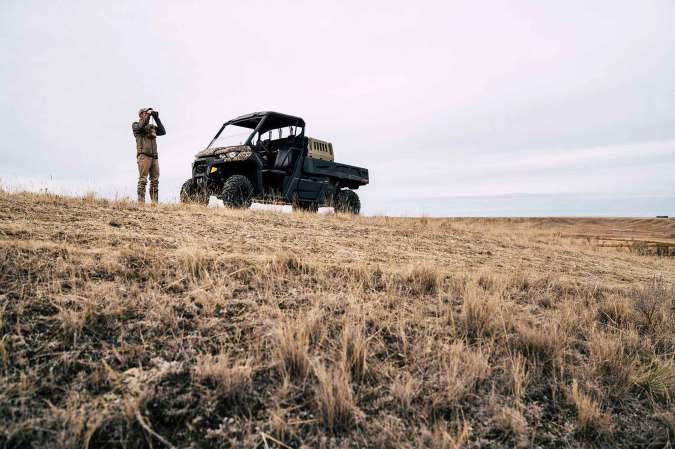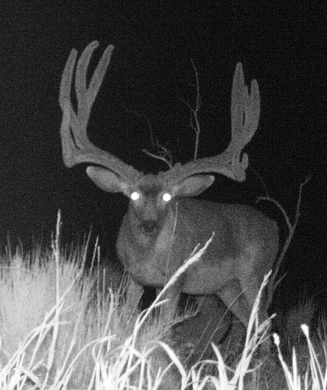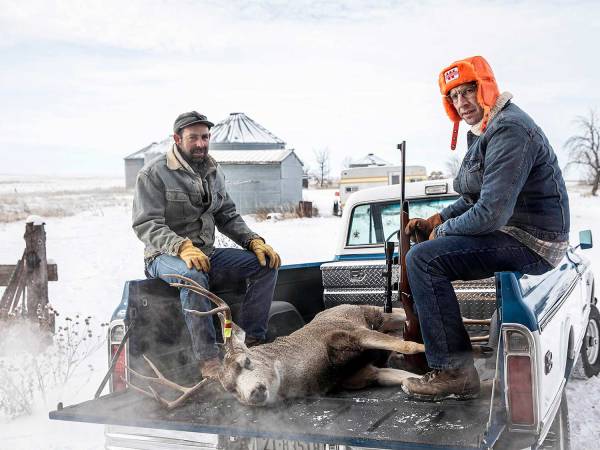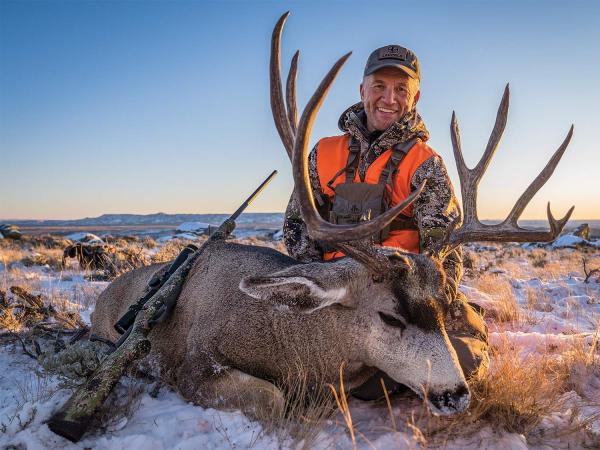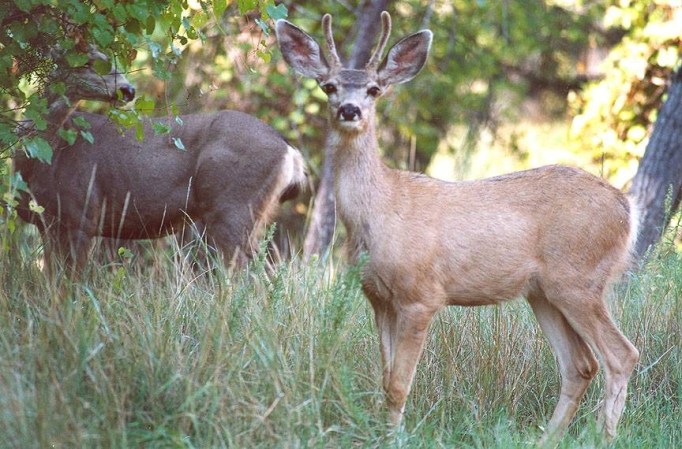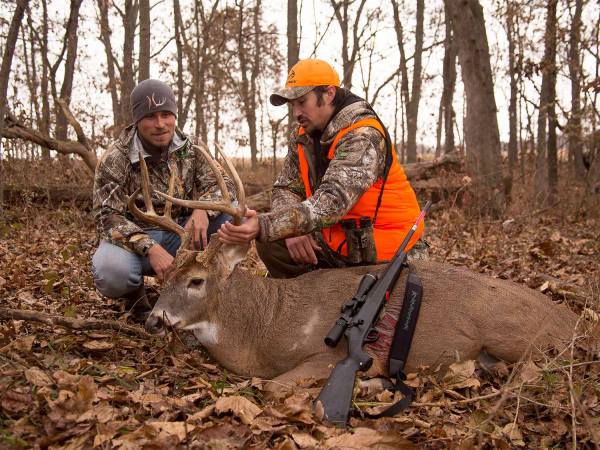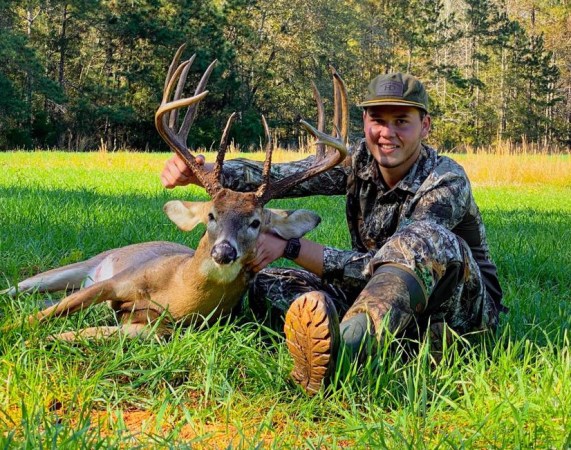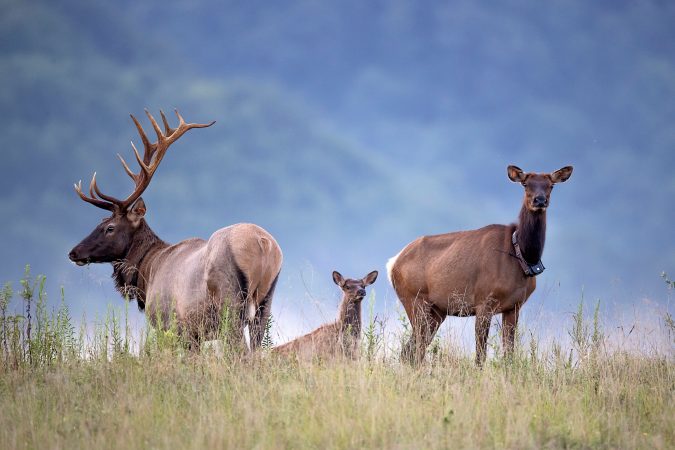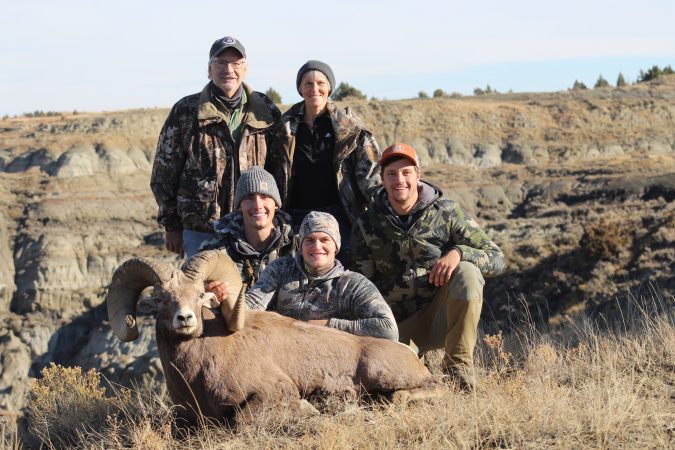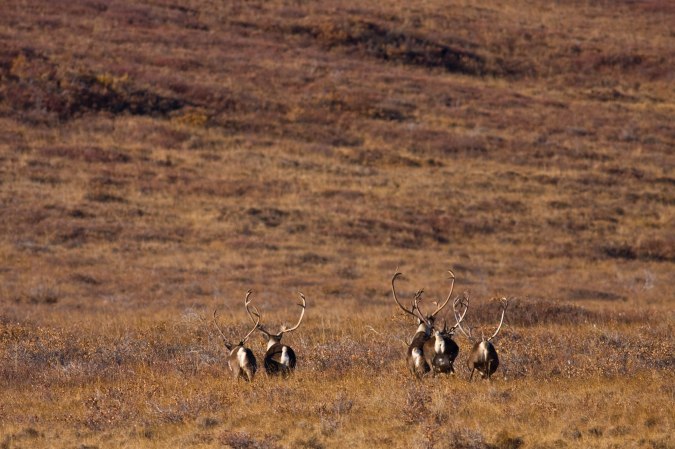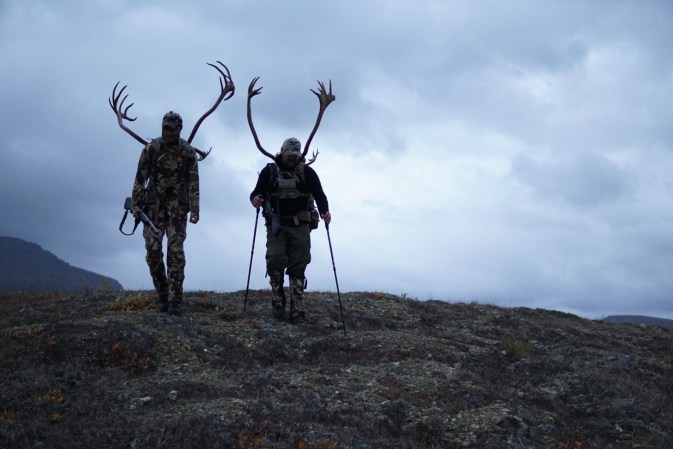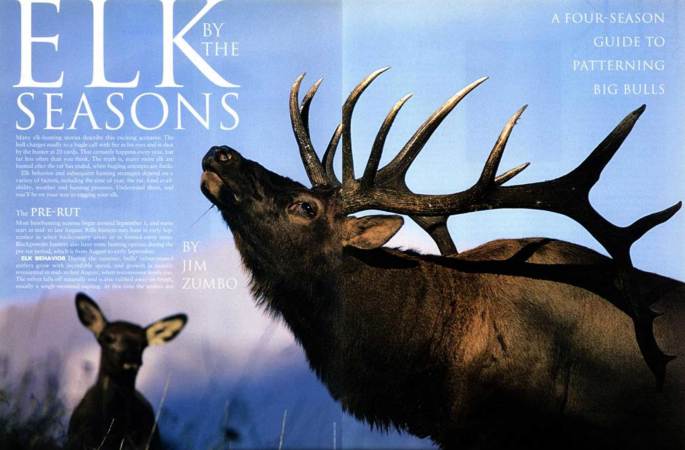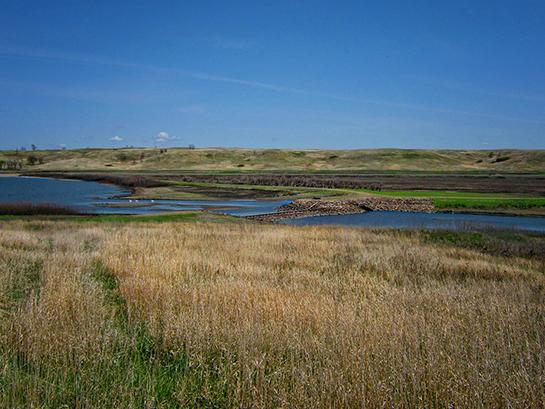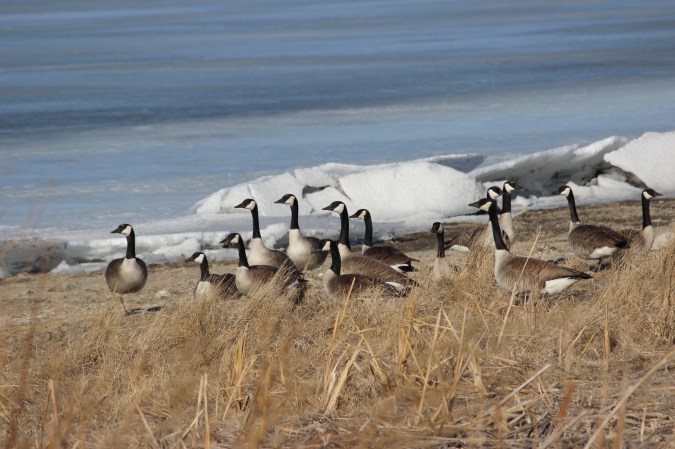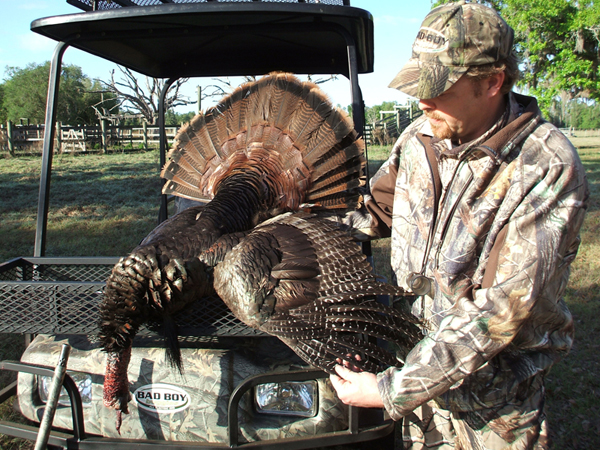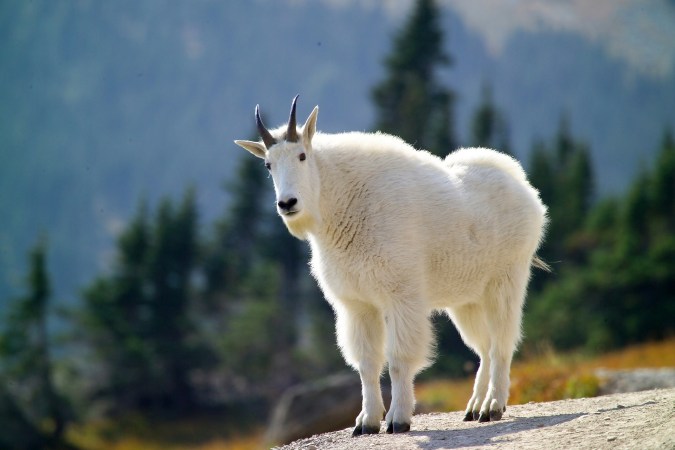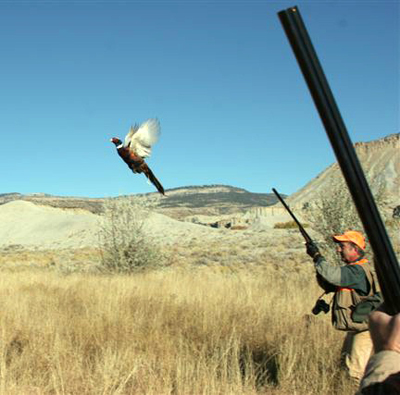Captain Meriwether Lewis was a worried man as the terrible winter of 1804-05 approached, but not because of the weather. Even though the Corps of Discovery had made good progress in reaching North Dakota, he was annoyed by a problem that manifested itself every time the group met a tribe of Native Americans there. Sign language and George Drouillard’s limited ability to speak Indian tongues enabled Corps members to communicate with indigenous people such as the Teton and Yankton Sioux, Missouris, Omahas, Otoes and Poncas downstream. Farther upriver, however, the explorers came to the land of the Amahamis, Mandans, Arikara (or Ree) and Hidatsa (also known as Minitari or Gros Ventres, which is French for “Big Bellies”). The language of these tribes was more difficult for the company to understand. Conversely, the explorers had difficulty making themselves understood.
In early November, as the party was building its winter quarters at Fort Mandan, a French trapper who lived in the area and was familiar with the various Indian tongues of the northern Plains visited Lewis and Captain William Clark and offered his services as an interpreter. The pair decided that hiring Toussaint Charbonneau would be a good investment, especially after learning that his young, pregnant wife was a Shoshone, or Snake. Farther west, in the land of the Shoshones, Charbonneau’s squaw might be helpful in fulfilling the explorers’ mission. Her name was Sacagawea.
HUNTING BIG MULE DEER ALONG THE LITTLE MISSOURI
“A fine morning, wind from the S.E. the murckerey Stood at ‘0’ this morning I went with a party of men down the river 18 miles to hunt Buffalo, Saw two Bulls too pore to kill…we only killed two Deer & Camped all night with Some expectation of Seeing the Buffalo in the morning, a very Cold night, Snowed.” –William Clark, December 14, 1804
The farther north Lewis and Clark and their men had traveled in the summer of 1804, the more buffalo they had seen. By fall, however, the immense herds were starting to move toward their wintering grounds far to the south. And a few months later, as the explorers contended with a bitterly cold winter, feasts of fresh buffalo tongue and choice roasts were just pleasant memories. Thankfully, the explorers had the hospitality of the Mandan and Hidatsa tribes and mule deer venison to tide them over.
After spending the harsh winter of 1804-05 at Fort Mandan, the expedition paddled northwest on the Missouri River toward Montana, where Lewis and Clark’s party found less open prairie and a land broken up by draws and coulees dotted with buffalo berry bushes, junipers, cedars–and mule deer.
One can only imagine what the explorers must have thought as they marveled at the rugged landscape of western North Dakota, which encompasses the Badlands and the rolling prairies that frame the Little Missouri River and neighboring tributaries of the Big Muddy. Here was more of the hunter’s cornucopia, as Meriwether Lewis indicated in his September 16 journal entry: “…vast herds of Buffalo, deer, Elk, and Antelopes were seen feeding in every direction as far as the eye of the observer could reach.”
Today the modern sportsman can hike to the vistas where Lewis might have stood and glass as far as his optics can reach, looking for mule deer. Finding the “curious deer with the black tail” won’t be difficult, but you will encounter something Lewis and Clark didn’t: privately owned land. Access to prime hunting land has become challenging in recent years, and it may take cash to gain access to some areas.
Fortunately, there are good numbers of muleys in the Little Missouri National Grasslands, which produced the state-record typical (1930, in McKenzie County) and non-typical (1945, in Billings County). The choicest hunting is southwest of Watford City, between the area around Theodore Roosevelt National Park and west to the Montana border where the Yellowstone River enters the state. In general, however, good hunting is possible all the way south to Marmarth. Beginning on the north end and proceeding south, units 4A through 4F are top spots. However, it’s not easy for nonresidents to draw a tag to one of those areas through the state’s lottery system. Of the approximately 6,000 hunting permits for mule deer that are issued during the modern firearms season, state law restricts nonresidents to one percent. Applications for the lottery become available in late May and must be returned in June.
Fair populations of muleys are available on some state lands, such as the Killdeer Mountains and the Antelope Creek Wildlife Management Area. Acres of Bureau of Land Management property are also accessible. However, there is some intermixing of private, federal and state land (at very nearly a 50/50 ratio), so you’ll need a Forest Service map to keep track of the places you can hunt without permission.
Good optics are essential for a successful Dakota hunt for mule deer, as are “spot-and-stalk” skills. Flintlocks, such as were used by Lewis and Clark and their men as they passed through this windswept landscape, are optional.
–Contact: North Dakota Game and Fish Department, 701-328-6300, www.discovernd.com/gnf; U.S. Forest Service (Dakota Prairie Grasslands), 701-250-4443, www.fs.fed.us/r1/dakotaprairie; Missouri River National Grasslands, U.S. Geological Survey, https://mapping.usgs.gov/
START FISHING EARLY FOR ICE-OUT MONSTER PIKE
“We Saw a ruck of Bones on the Bank S.S. which appeared to be the Bones of a monstrous large fish, the Back Bone is 45 feet long.” –Joseph Whitehouse, Sept. 10, 1804
It’s not clear what the 45-foot skeleton described by both Whitehouse and Sergeant Patrick Gass actually was, but it surely wasn’t a northern pike. North Dakota’s Missouri River system is home to some huge pike, but none quite that large.
When Garrison Dam arrested the Missouri River, bringing into being the gargantuan reservoir named after Sakakawea (the official North Dakota spelling of Sacagawea), northern pike flourished on the flooded prairie. Today, Lake Sakakawea is a major destination for anglers seeking trophy-size pike. The best time to catch a big “gator” is in early spring.
Timing is essential when fishing ice-out pike. There are two prime times to fish–just before the ice pulls away from shore and just after. Anglers must stay abreast of ice conditions, which vary widely from year to year. Call the folks at Lake Sakakawea State Park in Pick City for an up-to-date ice report.
Before ice-out, anglers drill holes in the back reaches of the countless bays in water as shallow as 1 to 3 feet. Tip-ups are armed with heavy Dacron line and either a herring or smelt impaled on a “smelt hook.” The bait lies on the bottom or is suspended slightly above it. Big female pike cruise the warming shallows and aren’t bashful about scavenging dead fish. It’s legal to set four lines with signal flags for the pike. When a flag pops up, it’s time to start running. There can be a lot of running.
Once the ice pulls away from shore, the tactic switches to casting into open water with smelt or herring for bait. Use a hefty bobber to suspend the bait just over the bottom. A few northerns in the 30-pound-plus category are caught every spring, and 20-pounders are not uncommon.
Some of the best places to fish ice-out pike are Beaver Creek Bay and Renner Bay on the south side of the reservoir. Other bays that produce are Red Butte, Douglas and Steinke. The Wolf Creek area is good, too. Some areas require a special license from the Fort Berthold Reservation; otherwise a North Dakota fishing license is all you need.
Carry a camera and a tape measure to record the bigger pike you catch, then release them to fight another day. You’ll catch plenty of smaller “eaters” for a fish dinner.
Lake Sakakawea didn’t exist in 1805, when Lewis and Clark paddled west from Fort Mandan on April 7. That’s just about when ice-out pike fishing is going strong on the big reservoir. Had the lake been there when the explorers passed through, no doubt their trip would have been delayed a few days while they sampled the great fishing.
–Contact: North Dakota Game and Fish Department, 701-328-6300, www.discovernd.com/gnf; Lake Sakakawea State Park, 701-487-3315, www.ndparks.com/parks/LSSP.htm
DOWNTOWN BISMARCK’S PRE-SPAWN WALLEYES
“…there were three beaver taken this morning by the party. The men prefer the flesh of this animal to that of any other which we have, or are able to procure at this moment. I eat very heartily of the beaver myself, and think it excellent, particularly the tale, and liver…” –Meriwether Lewis, April 17, 1805
Obviously, Meriwether Lewis and his men never ate deep-fried walleye, or their choice of favorite food might have been different.
Those who follow in Lewis and Clark’s shadows today will have plenty of opportunities to partake of a supper of walleye fillets. The Missouri River, which splits the two cities of Bismarck and Mandan, is home to a thriving walleye population. Sauger, which are cousins of walleyes, were more prevalent in Lewis and Clark’s day.
In the spring, even anglers without a boat can enjoy good walleye action. Shore-fishing near the Heskett Power Plant at the north end of Mandan is especially good after ice-out. Baitfish are drawn to the flow of warm water and algae blooms, and pre-spawn walleyes follow. Night-fishing is popular. Kimball Bottoms, a public area south of Bismarck and Mandan, is also a good place to fish from shore; primitive camping is allowed.
Those with boats can put in at various places such as the Burnt Creek ramp directly across the river from the Heskett Plant, or the Grant Marsh Bridge landing, which is in the middle of town near the main bridge. Another downtown ramp is located at Fox Island Park. Once the spring spawning run is over, the walleye fishing is excellent from one end of the two cities to the other, and beyond in either direction.
The primary presentation is a jig and minnow, but crankbaits are also effective, especially for boat anglers. Current-powered crankbaits move more slowly, making them more appealing to early-season walleyes notorious for not chasing lures.
Walleyes differ from trout in that they avoid strong current. You’ll find them hanging out behind current breaks such as the downstream side of sandbars and points, or behind rock piles. Some anglers prefer to pitch jigs into these slackwater “holes,” while others favor trolling upstream, long-lining crankbaits through the quieter water.
If Captains Lewis and Clark had had a few crankbaits and jigs, they could have supplied the Corps of Discovery with fresh fish just by trolling as the men rowed. Rank had its privileges–especially 200 years ago.
–Contact: North Dakota Game and Fish Department, 701-328-6300, www.discovernd.com/gnf; Bismarck/Mandan Convention and Visitors Bureau: 800-767-3555, www.bismarckmandancvb.com
LAST-CHANCE GEESE IN THE CORNFIELDS
“Saw a Goose nest on a tree one man clomb it found only 1 egg.” –John Ordway, April 13, 1805
Lewis and Clark were familiar with Canada geese, and their numerous journal entries about geese nesting in trees, though unusual and later disputed, proved accurate.
The Corps of Discovery was stunned by the fall migrations of birds and mammals. Even then, Canada geese and mallards were stubborn migrants, refusing to head south until the hard hand of winter left them no choice. Nowadays, waterfowl still resist leaving.
Consequently, stubborn waterfowlers can enjoy exceptional late-season hunting for geese and ducks. The area from Bismarck north to Garrison Dam offers exceptional goose hunting. Waterfowlers may hunt the river from Bismarck to Turtle Creek, south of Washburn. From Turtle Creek north to the dam, hunting on the river is prohibited.
Experienced goose hunters hunt fields rather than harass geese in their resting areas so as not to hasten their migration. However, access to private land along the river is getting difficult to attain, driving some to hunt the public waters south of Washburn. It’s best to set up just north of the open area, taking advantage of the pressure exerted by river hunters. The fields in the lower flood plain are the best spots for decoys. Grain stubble is good but cornfields are better.
After leaving Saskatchewan, the geese head for lakes Sakakawea and Audubon, which is separated from Sakakawea by U.S. Highway 83.
Stalwart North Dakota hunters don’t have to worry about being crowded by other waterfowlers in December. Only hard-core hunters stick it out, but they’re just the kind of hunters Lewis and Clark would have appreciated.
–Contact: North Dakota Game and Fish Department, 701-328-6300, www.discovernd.com/gnf
Special thanks to Yamaha Motor Corporation for providing the Outdoor Life Lewis & Clark expedition with ATVs.
Places to See While You’re in North Dakota
L&C TRAIL WAYPOINTS
1 On-a-Slant Indian Village 7 miles south of Mandan, 701-667-6340, www.ndparks.com/parks/flsp.htm
2 North Dakota Heritage Center Bismarck, 701-328-2666, www.discovernd.com/hist
3 Fort Mandan and Lewis and Clark Interpretive Center 2 miles west of Washburn, 877-462-8535, www.fortmandan.org
4 Knife River Indian Villages National Historic Site 2 miles north of Stanton, 701-745-3309, www.nps.gov/knri
5 Theodore Roosevelt National Park North Unit, 701-842-2333, South Unit 701-623-4466, www.nps.gov/thro
6 Three Tribes Museum 4 miles west of New Town, 701-627-4477, www.mhanation.com
7 Lewis and Clark State Park 16 miles east of Williston, 800-807-4723, www.ndparks.com/parks/lcsp.htm
8 Fort Union Trading Post National Historic Site 20 miles southwest of Williston, 701-572-9083, www.nps.gov/fous
LEWIS & CLARK BICENTENNIAL EVENTS
2004
NORTH DAKOTA
–Lewis and Clark Days, June 4-6, Washburn, 800-435-5663, www.ndtourism.com
–Heritage Outbound Summer Adventure, Aug. 14-15, Fort Mandan, Missouri River, 800-435-5663, www.ndtourism.com
–Circle of Cultures, Time of Renewal and Exchange, Oct. 22-31, Bismarck, 701-663-4758, www.fortlincoln.com
2005
–Heritage Outbound Winter Adventure, Jan. 22-23, 2005, Fort Mandan, Washburn, 800-435-5663, www.ndtourism.com
2006
–Return to the Home of Sakakawea, Aug. 17-20, New Town, 701-627-2870, www.mhanation.com
For more information on Lewis and Clark historic sites and associated events in North Dakota, contact North Dakota Tourism, 800-435-5663, www.ndtourism.com.
For more information on the Lewis & Clark Adventure, go to www.outdoorlife.com.

